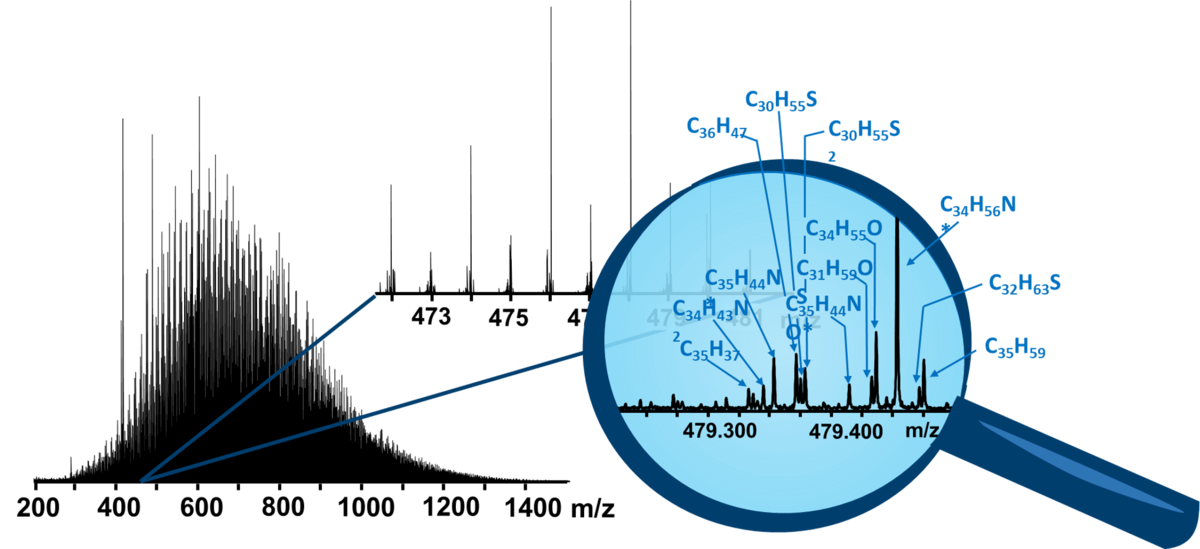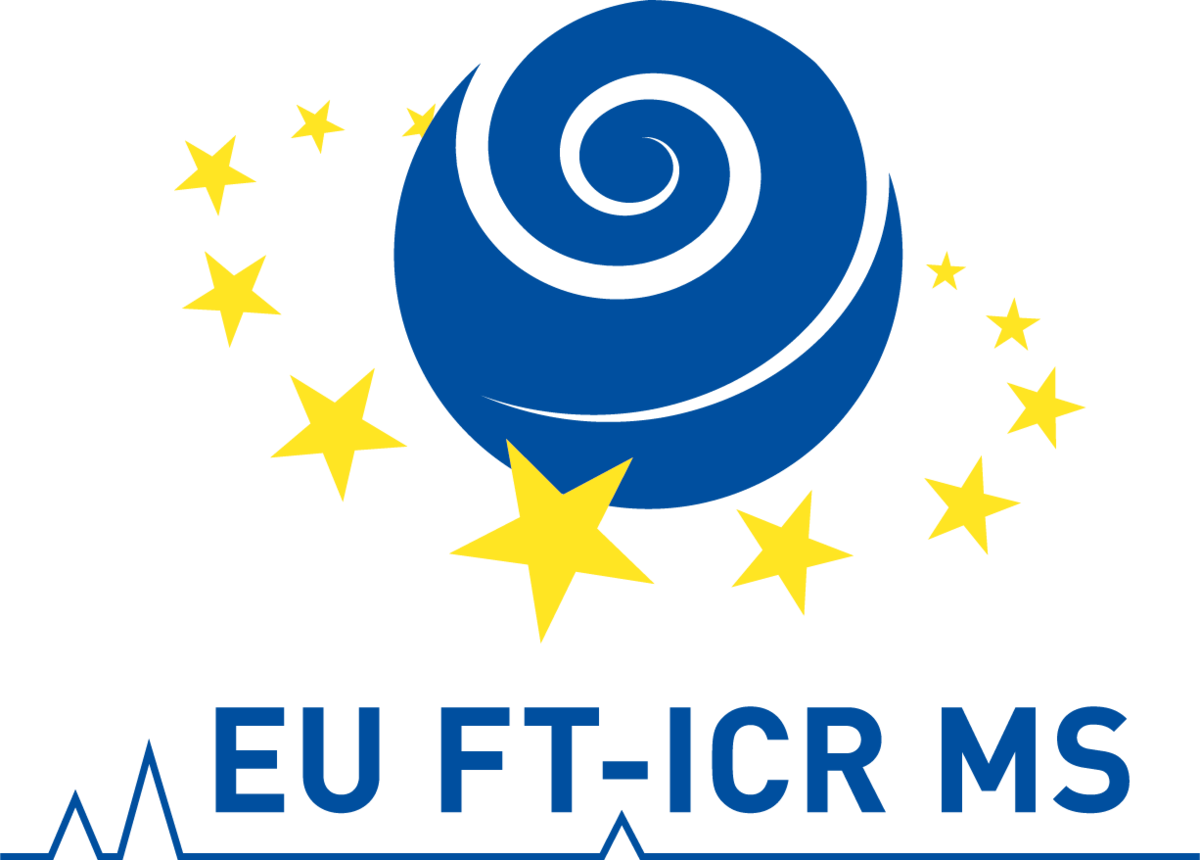Topic high resolution mass spectrometry
Dr. Christopher Rüger
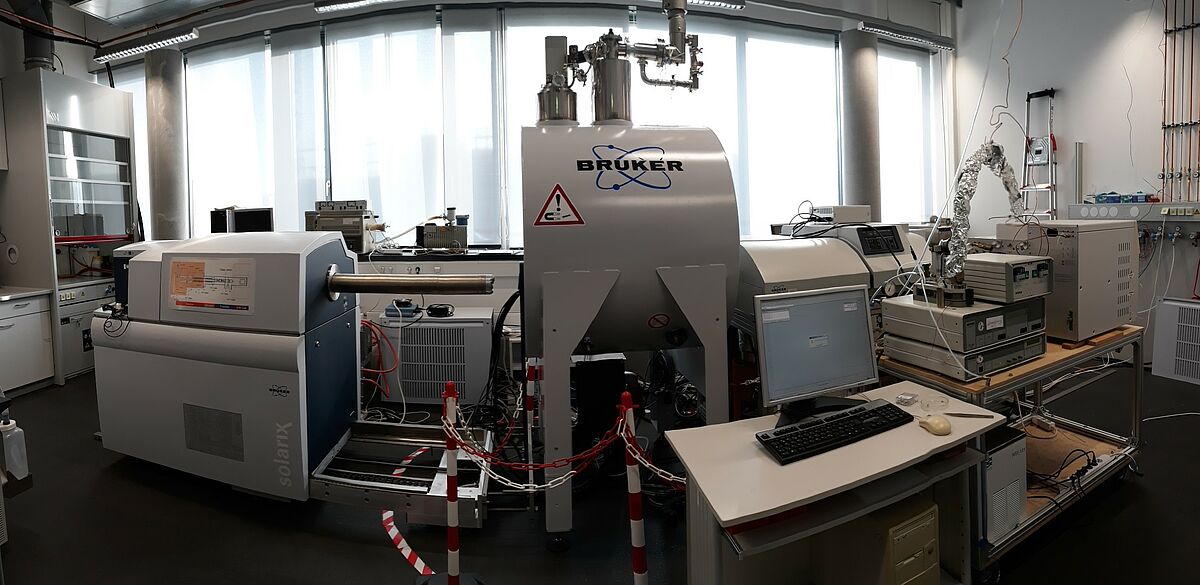
About high resolution mass spectrometry
High resolution mass spectrometry enables the exact assignment of the mass-to-charge ratio of ions with the help of high mass resolving power and mass accuracy. Due to the mass defect of the individual isotopes, each exact mass composed of CcHhNnOoSs is unique and be used for the calculation of the sum formulae of unknown signals. That way, high resolution mass spectrometers are able to resolve signals which have the same nominal mass and therefore, thousands of species can be identified in a single spectrum without further separation.
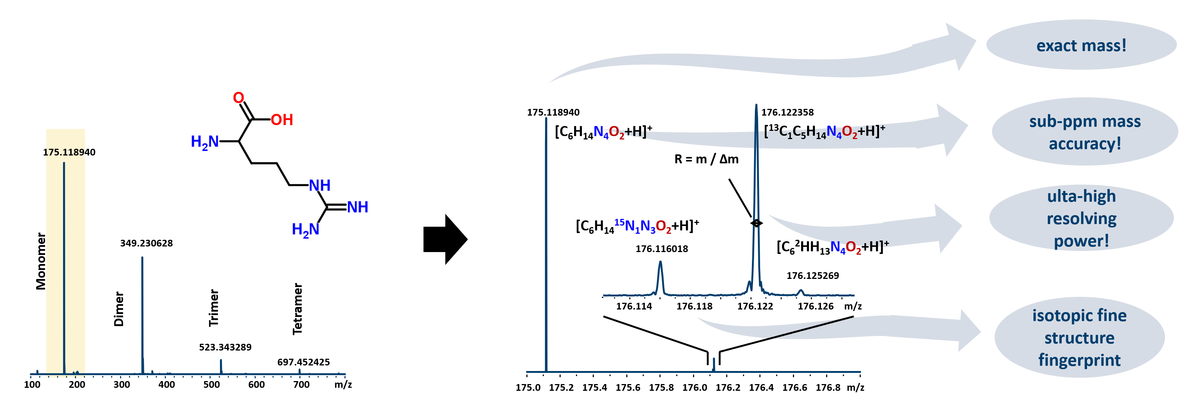
As ultra-high resolution mass spectrometers, Orbitraps and Fourier transform ion cyclotron resonance mass spectrometers (FT-ICR MS) are applied. In our group, two FT-ICR MS intruments at one 7T magnet and one Orbitrap are available.
At the moment, the focus of our FTMS group is the development of analysis method for the characterization of complex mixtures such as petroleum derived samples and combustion aerosols. Besides, we are part of the EU_FT-ICR MS project, a network project of 11 FT-ICR centres across the european union. The option of Trans National Access (TNA) enables researchers and small and medium enterprises to apply for measurement time at the FT-ICR MS instruments of the centres. For more information, check out the official website www.eu-fticr-ms.eu. Another project of our sub group is the AerOrbi project, in which we try to develop a new photoionisation orbitrap mass spectrometer for aerosols.
Method developement
Mass spectrometry needs charged molecules - or in other words - ions. Therefore, we develop and optimize different (photo)ionisation techniques for special applications or different sample inlet systems. Each ionisation method and each sample inlet technique has its own advantages and disadvantages. It is important to find for each sample the appropriate inlet technique and preparation as well as a suitable ionisation method, because non of our atmospheric pressure ionisation techniques is able to ionise the whole chemical space. You have to keep in mind that we can only ionise a part of the present molecules and we possibly need to combine several techniques for a comprehansive analysis.
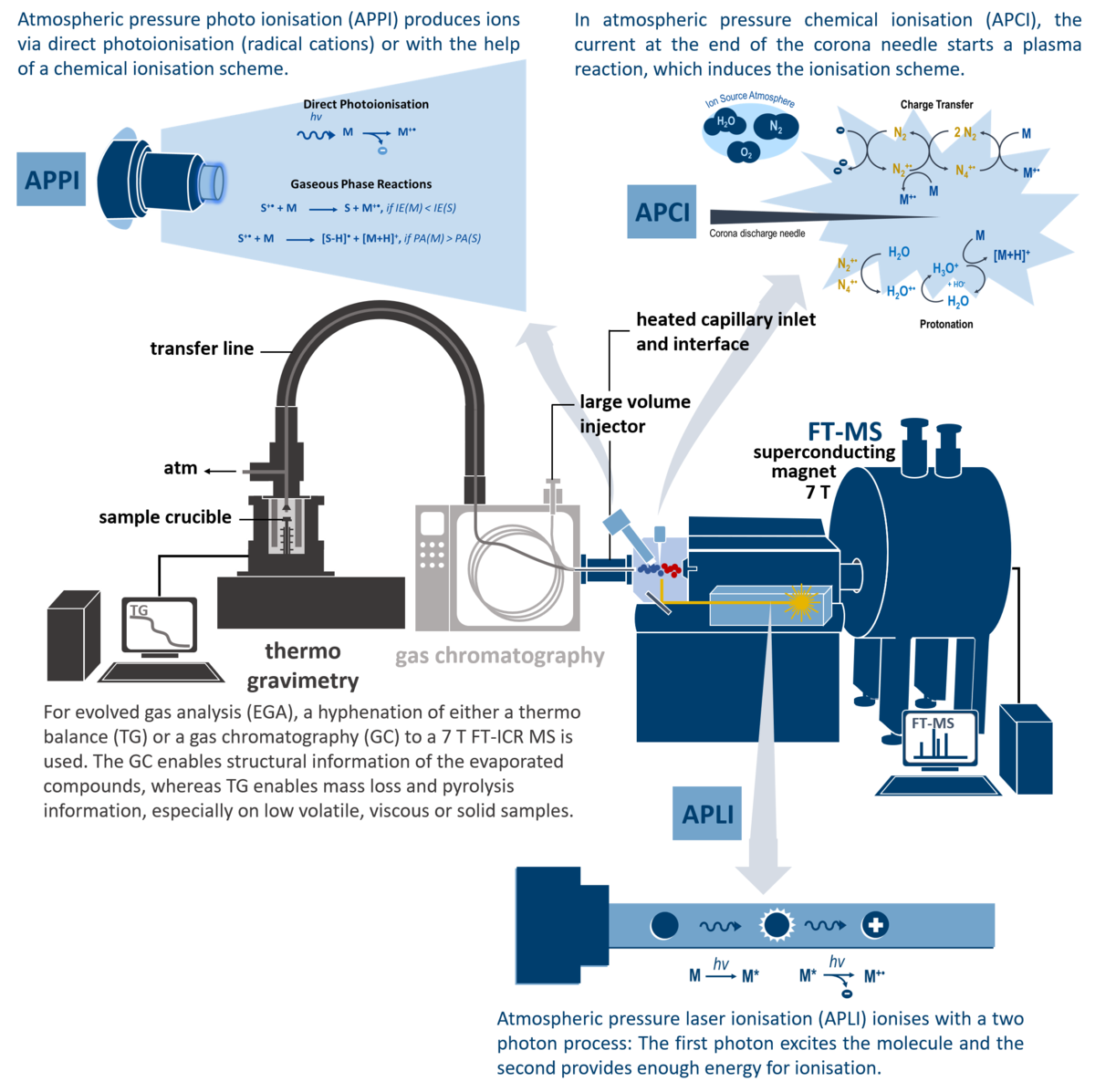
Contact
University of Rostock
Institute of Chemistry
Division of Analytical and Technical Chemistry
Department Life Light & Matter
Dr. Christopher Rüger
Albert-Einstein-Straße 25
18059 Rostock (Germany)
Tel.: +49 (0) 381 498 - 8990
E-Mail: christopher.rueger(at)uni-rostock.de

